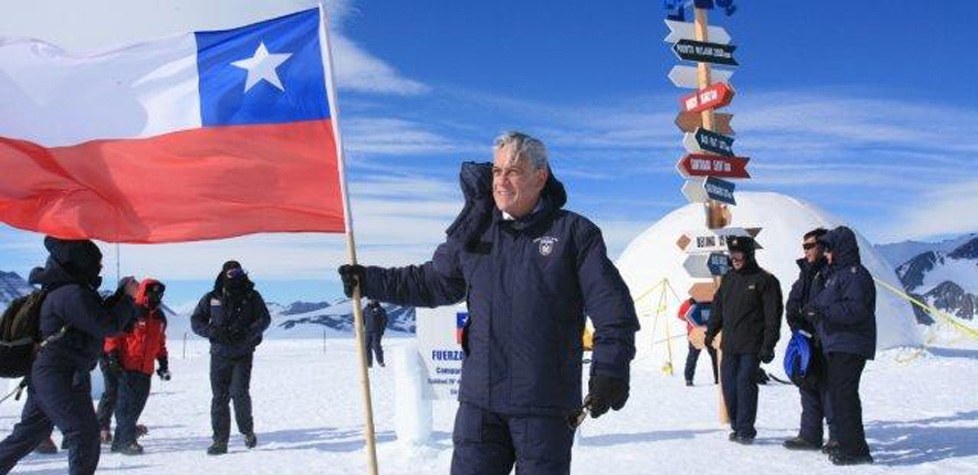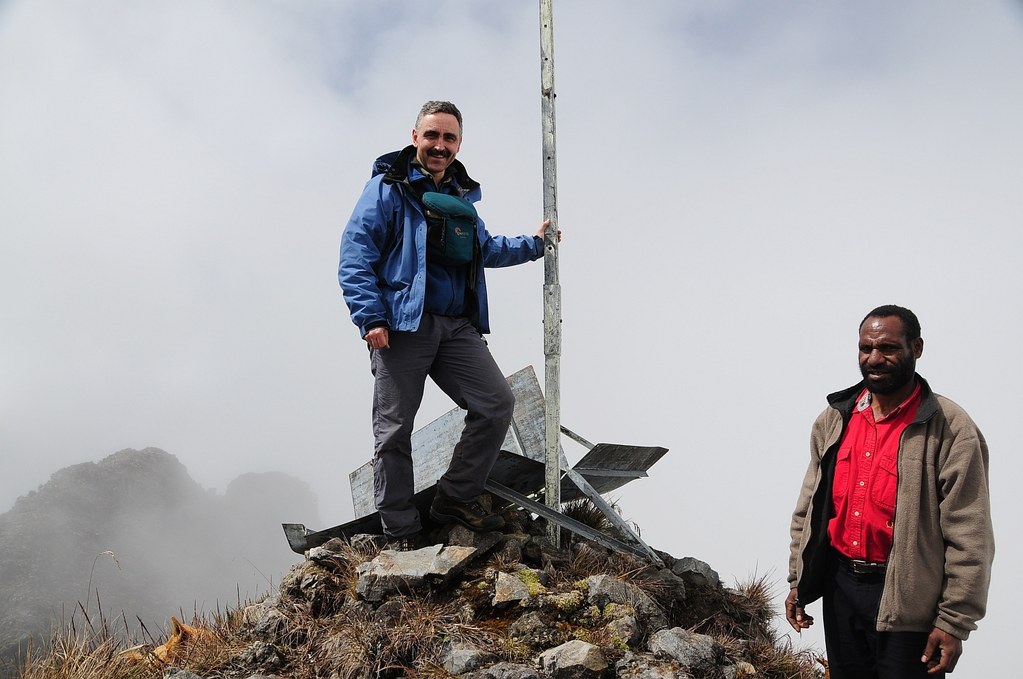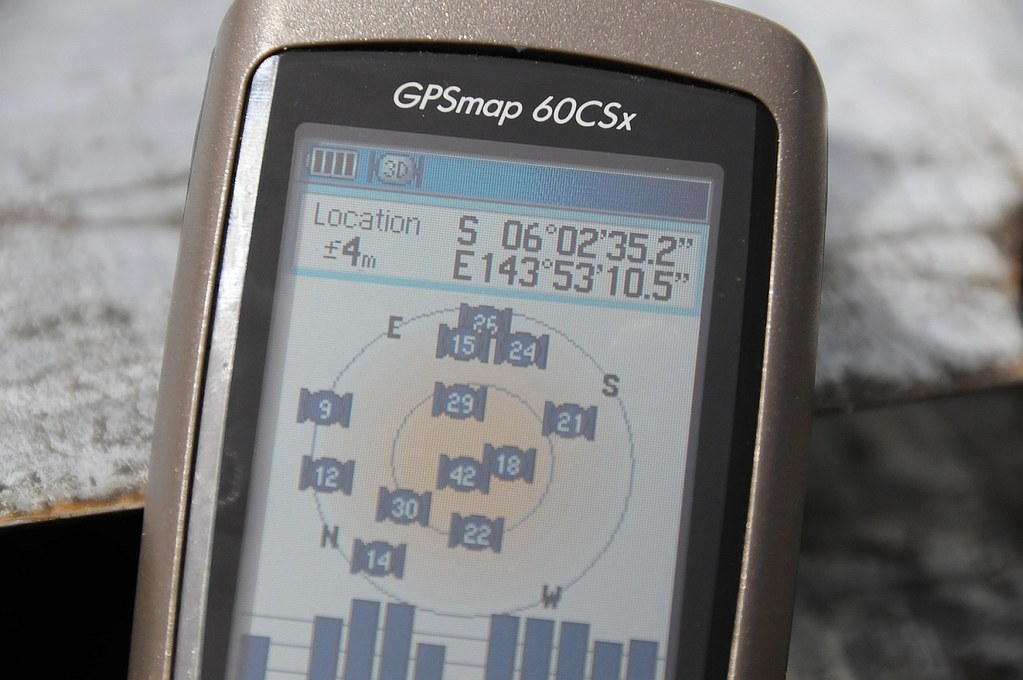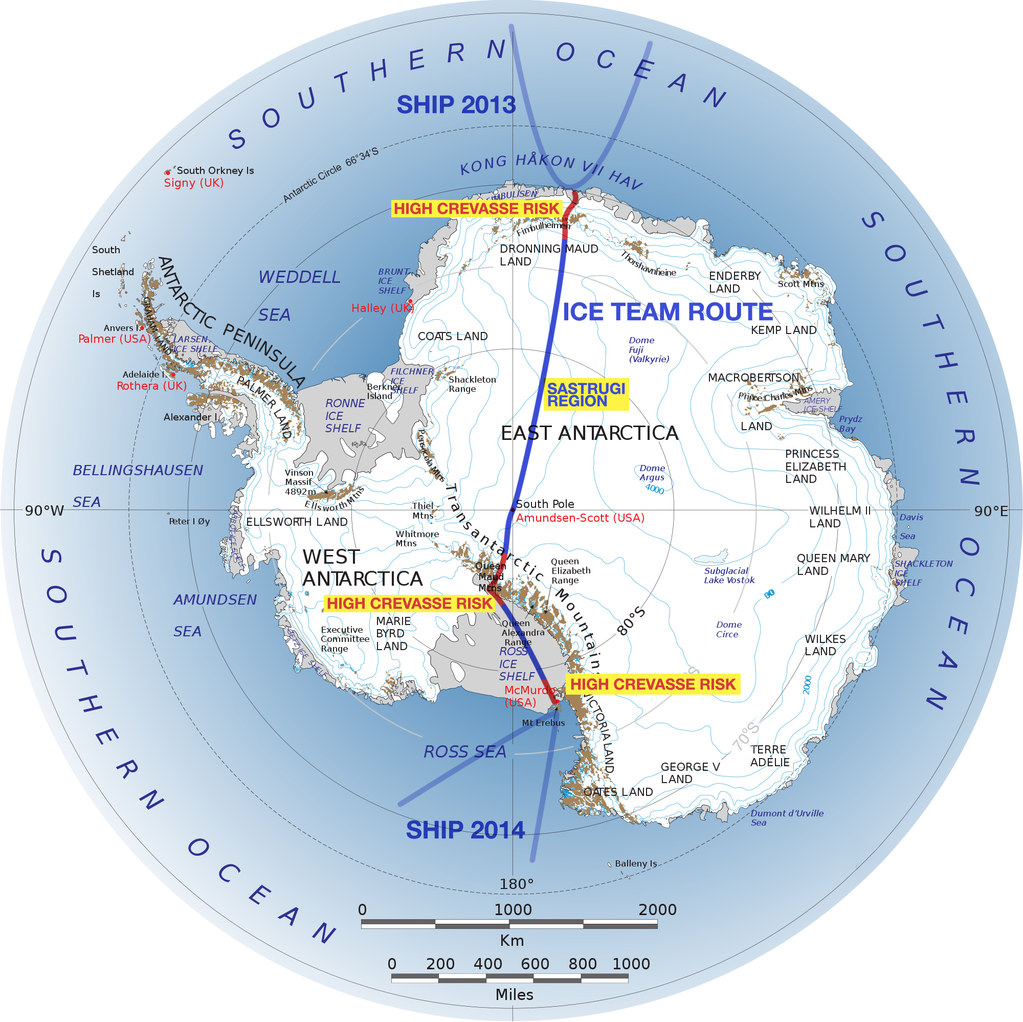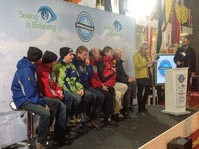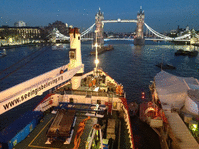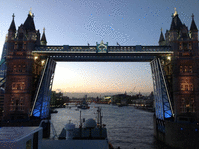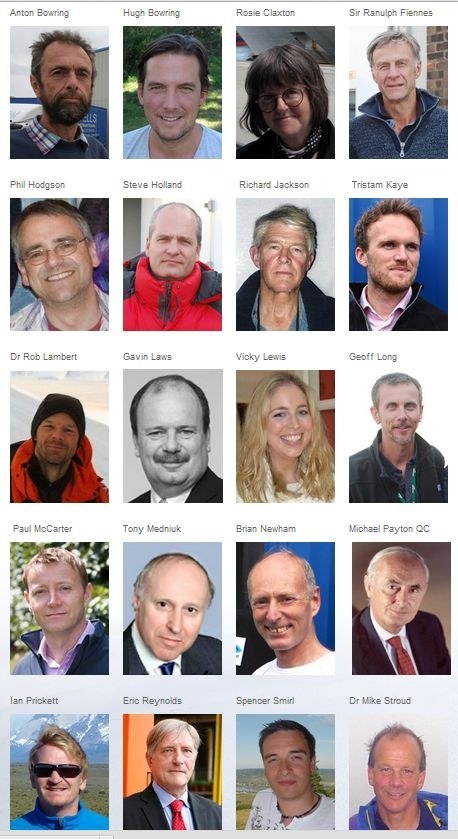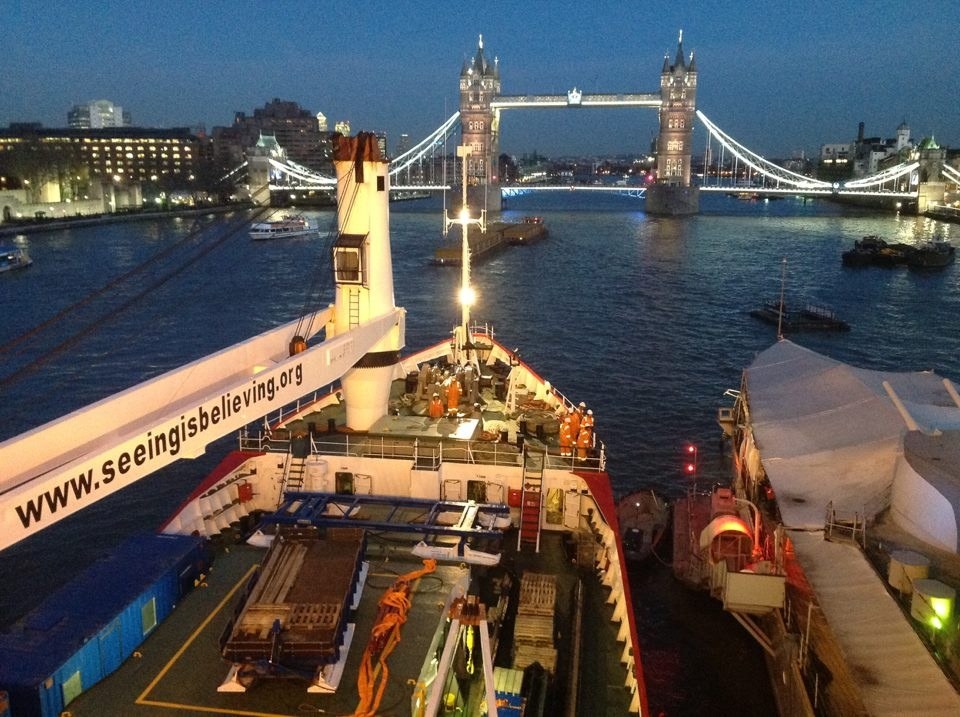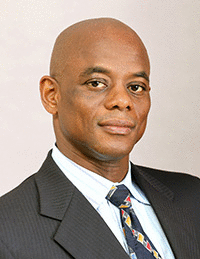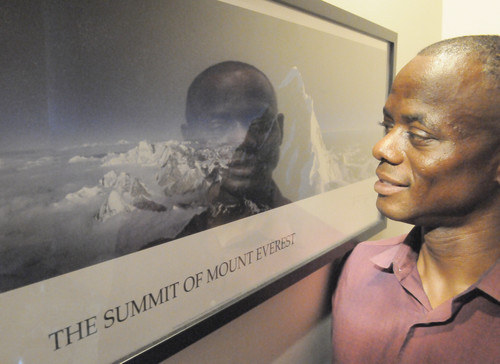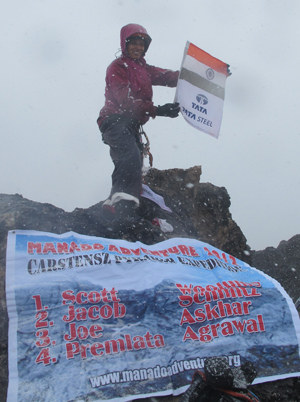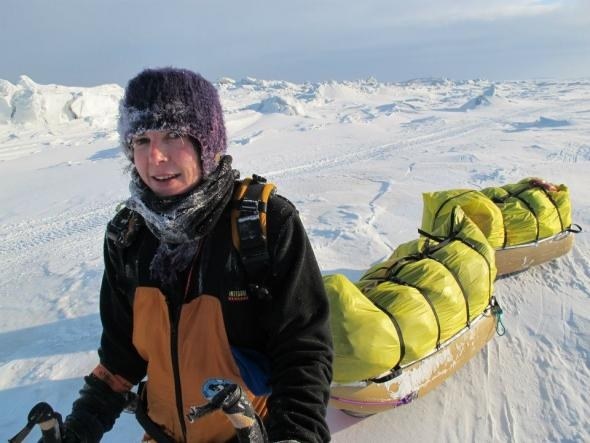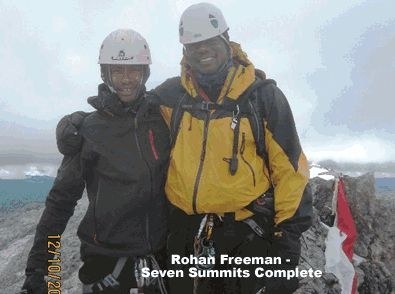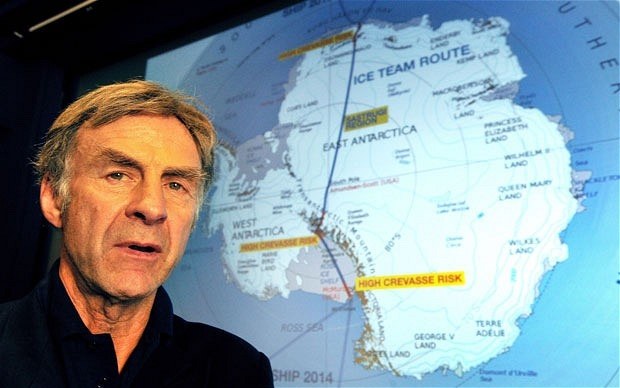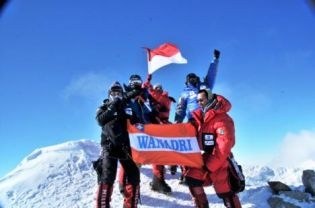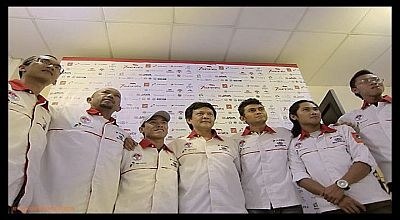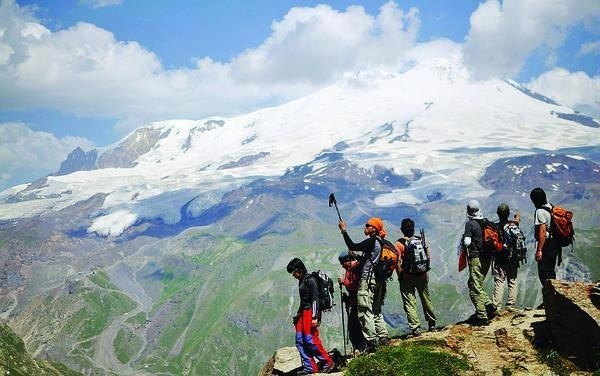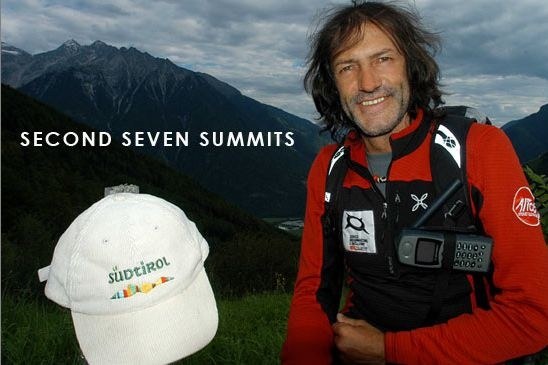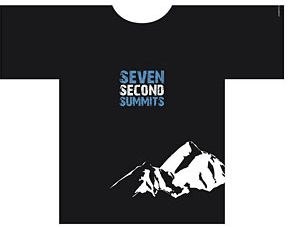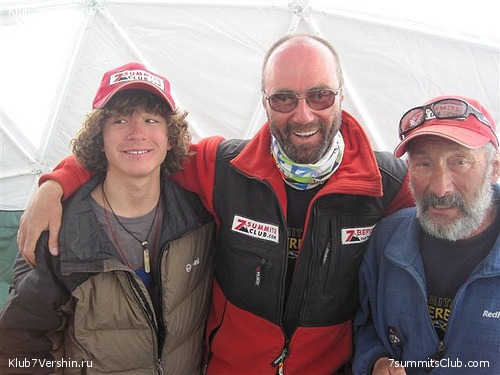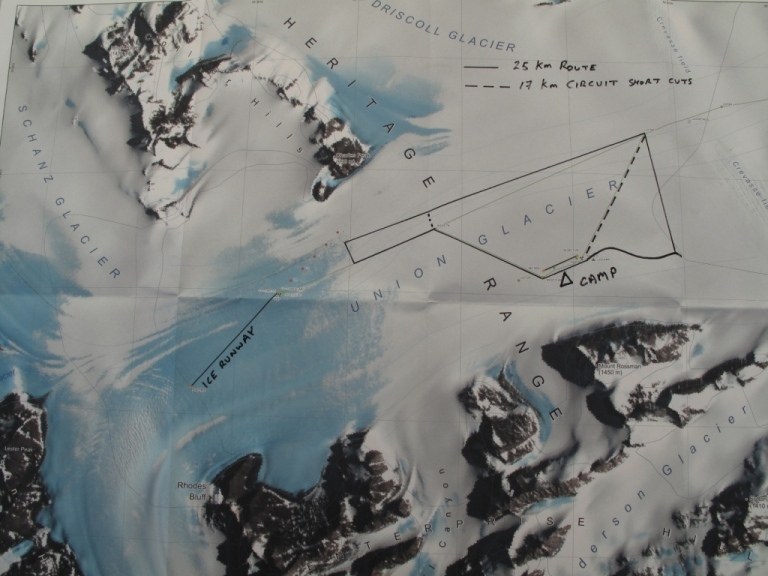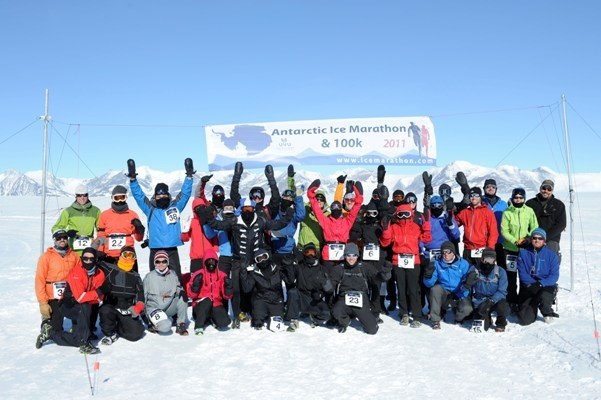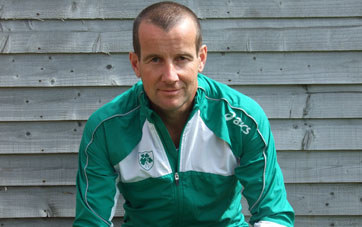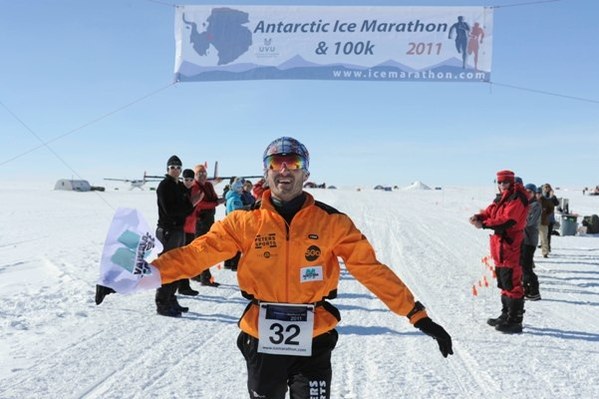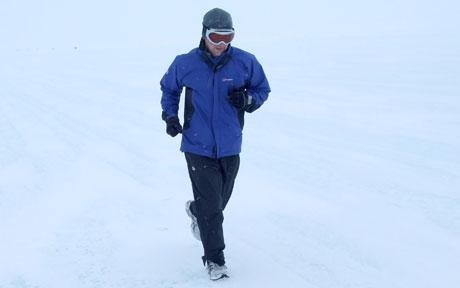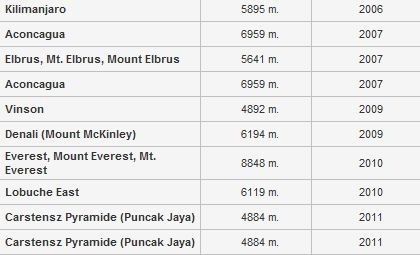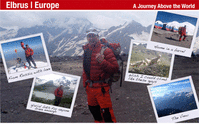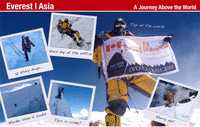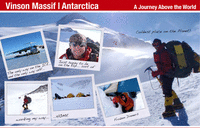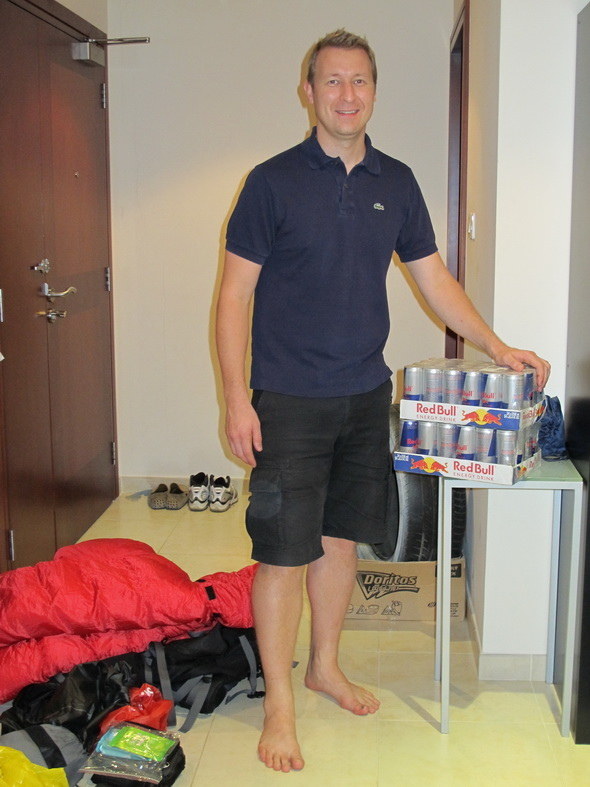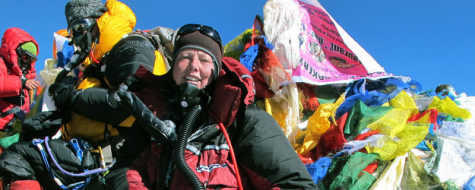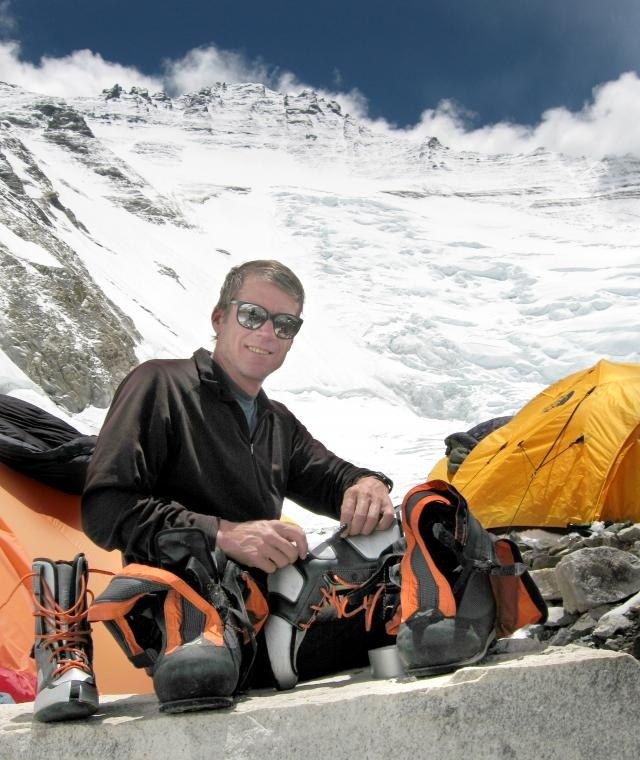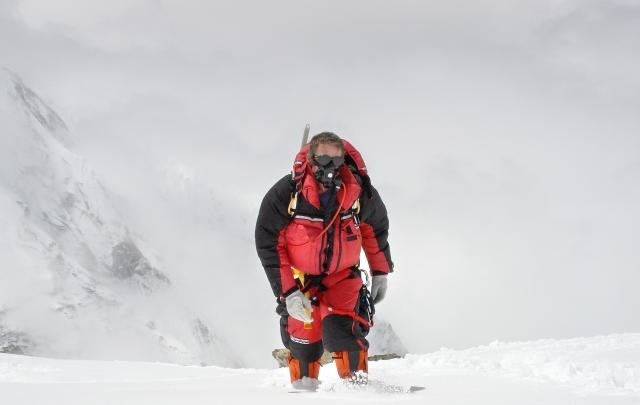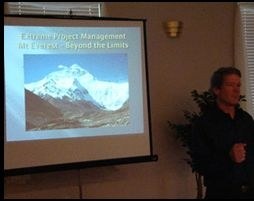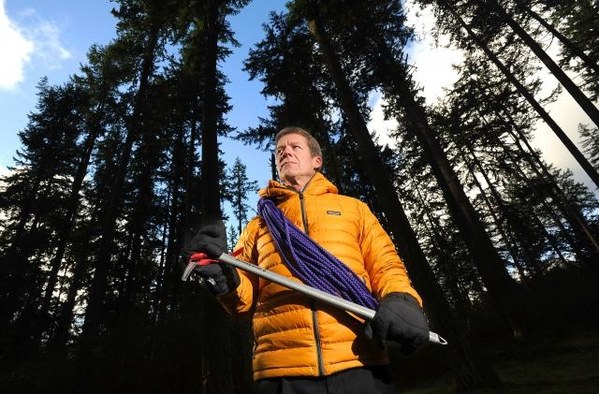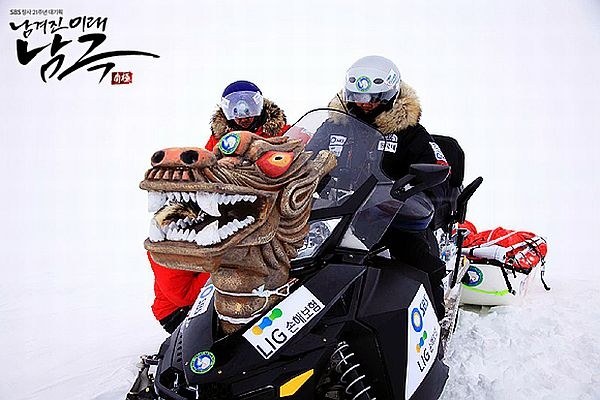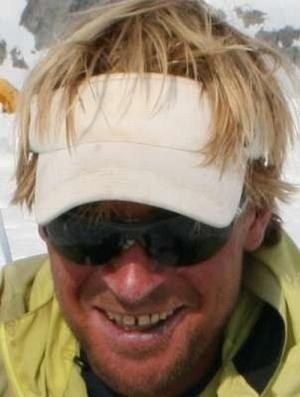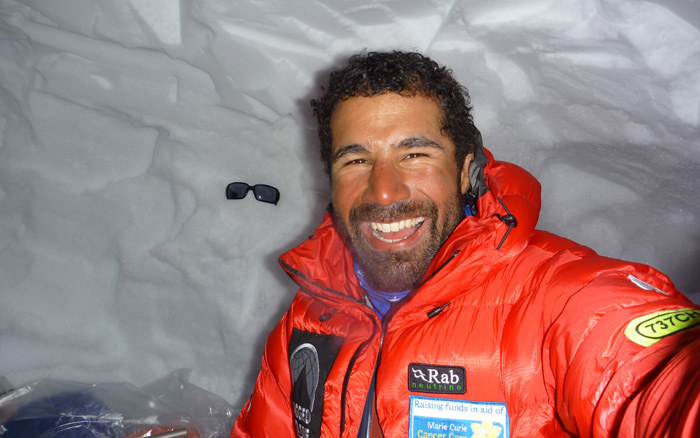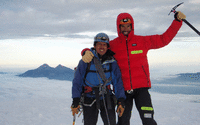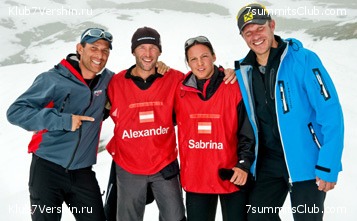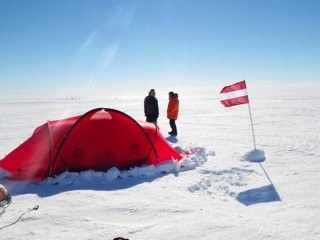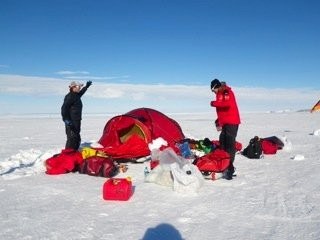World mountain's news
End of season: Vladimir Putin fly to Antarctica
South Pole.
Next week President of Russia Vladimir Putin will officially visit theRepublicofChile. According some information he with President Chili Pinera will fly toAntarctica. No comment yet. Season Wrap from ANI. ANI was delighted to welcome the ...
Next week President of Russia Vladimir Putin will officially visit theRepublicofChile. According some information he with President Chili Pinera will fly toAntarctica. No comment yet.
Season Wrap from ANI.
ANI was delighted to welcome the President of theRepublicofChile, Sebastian Pinera Echenique, to Union Glacier today. President Pinera has a strong interest inAntarcticaand has made several visits to the continent but this was his furthest trip south (79S) and the first to the extreme edge of the Chilean sector (80W).
The visit is one of several that, according to Pinera, "...symbolize our deep commitment as a country to the Antarctic continent.Chileis going to strengthen its presence and its contribution so that this continent can enable us to address the future and develop science and tourism.” The President has made similar visits to the Antarctic Peninsula with the Presidents ofUruguayandEcuador, all of whom are members of the Antarctic Policy Counsel (CPA).
Part of the purpose of this visit to Union Glacier is for the President to see potential locations for a new Chilean station in the area, to be operated by the Fuerza Aerea de Chile (FACh). During a recent visit toLondon, President Pinera signed an agreement to strengthen scientific cooperation between the British Antarctic Survey and the Instituto Antartico Chileno (INACH).
During his stay at Union Glacier, President Pinera visited the FACh summer camp and met several of our ANI team. He was welcomed in particular by ANI's Operations Manager and our Chilean staff. It was great day for them and a great day for ANI. We’ve gained greatly over the years by visits from Chilean scientists from a number of research institutes, and look forward to continuing cooperation with them.
---
The ANI Ski South Pole Messner team has arrived at the South Pole and other expeditions supported by ALE/ANI are closing in. It's been a tough go for many. Early season conditions were cold and windy, with very hard travel surfaces. A number of teams broke sled runners, skis, or tent poles and had to make field repairs of their equipment. South of 85S through to 88 10S, teams on both the Hercules Inlet and Messner Start routes have encountered enormous sastrugi that has slowed their progress. Veteran ANI guide, Hannah McKeand, reported very high, close packed sastrugi, the worst she has seen in years. Not surprisingly, the rough terrain, wind and accumulated long days of skiing are starting to take their toll with many teams reporting aches and pains. But spirits are generally good and despite feeling tired, the teams keep working away to close the gap on the Pole.
ANI SKSP-Messner - Hannah McKeand and Eero Oura
Congratulations to ANI guide Hannah McKeand (UK) her teammate Eero Oura fromFinlandwho have arrived at the South Pole! The two arrived on January 9, after a strong and steady expedition, covering 12-14 nm per day. Like other teams they have had to contend with broken sled runners, the hard, rough surface and enormous sastrugi. They were happy to cross 88S on December 30 and even happier to reach 88 38S and 'very very flat ground'. Hannah has now completed her sixth South Pole expedition, re-confirming her distinction of skiing to the South Pole more times than anyone else.
More about ANI SKSP-Messner
Aaron Solo AcrossAntarctica- Aaron Linsdau
Aaron's goal was to be the first American to ski solo from the coast ofAntarcticato the South Pole and back without aid, resupply or shelter. He set off from Hercules Inlet on November 1, hauling a heavy sled and facing very cold, windy conditions which slowed his pace. Equipment issues and illness further delayed his progress. Unfortunately the slow start meant that he has had to give up the return trip and he is now focused on reaching the South Pole.
Webpage: blog.aaronlinsdau.com/
Ice Ski 2012 - Solo to the South Pole - Vilborg Gissurardottir
Vilborg is only eight days or so from reaching the South Pole. The Icelandic skier began her 730 mile (1170 km) trek at Hercules Inlet and has been methodically chipping away at the mileage, hitting her 20 km (12.4 miles) goal day in and day out, despite the conditions and changes to the Antarctic surface. Vilborg is skiing solo and will be the first Icelandic woman to ski to the South Pole. Her expedition aims to raise awareness and money for Life Benefit, a charity that aims to improve gynacological facilities and services for women and their families during pregnancy, delivery and post-partum.
Webpage: www.lifsspor.is/blogg/ (Icelandic)
Ice-Walk - Roland Krueger
Roland Krueger skied to the South Pole with a Hvitserk expedition in 2005. Now the German expeditioner is skiing the Messner-Start route solo, unsupported, and unassisted. Roland has kept up his mileage despite a broken sled runner, huge sastrugi, and route finding challenges. Between 85 and 87S he traversed east to avoid the sastrugi, found himself in a crevasse field and had to work back west onto a safer route. He's now out of the sastrugi, approaching 89S and looking forward to reaching the Pole!
Weblog: explorerslog.mobi/xlog/index/509
Richard Parks
Wales' rugby hero Richard Parks was the creator of the 737 Challenge and was the first person to climb the highest mountain on each of the world's 7 continents and stand on all 3 poles within 7 months. He returned toAntarcticathis season to ski solo, unsupported from Hercules Inlet to the South Pole. Richard was delayed heading toAntarcticawhen his equipment didn't arrive in time. Fortunately a friend tracked down the shipment in aUKwarehouse and hand carried most of his gear toChile. He was able to borrow a sled from ANI, fly intoAntarcticaand begin his trek on December 18. Richard kept a positive attitude and has been skiing a strong 17-18nm per day since then, aiming for a 35 day expedition. His daily ANI updates range from "All good" to "Long day, but a good day" or for a change, "Really good day". His January 01 blog entry describes a particularly tough day where he fought his way through wind and white-out, wanting to 'pull the plug' every step of the way, then ends with this summary, "I am shattered. Sometimes mountains, the outdoors, nature, gives you an experience that just hits a little deeper than normal, that was one today it was an awesome experience."
Webpage: www.richardparks.co.uk
Cycle South - Eric Larsen
Polar Explorer Eric Larsen has previously skied to both the North and South Poles, including guiding a trip for ANI in 2008. He was hoping to complete the first bicycle traverse from the coast ofAntarcticato the South Pole and back to raise money for the Davis Phinney Foundation and their efforts to use bicycles to help improve the lives of those who live with Parkinson's. www.davisphinneyfoundation.org/giving/donate/ Unfortunately, after just eight days, he had to make the difficult decision to turn around and head back to the coast.
"I had been making steady progress south (20-25nm per day) for the past eight days and travel has been difficult but not impossible...as I started to calculate my mileage south of 85 degrees, I realized that due to an increased amount of climbing, headwinds, and consequently sastrugi and drifts, my daily mileage would realistically be closer to 10 nautical miles per day. At that rate, my chances of making the pole before my food ran out (as well as the end of the season) would be zero - meaning a costly extraction by ALE somewhere before the pole. Now I've taken a lot of chances in all kinds of shapes and forms but this was not a chance I was willing to take. I cried in my tent for a long time when I finally decided.
I made one last attempt at biking south before crashing in the soft snow, I yelled and screamed and punched my fist in the snow. I was exasperated. Then, I got up and looked around. The wind had picked up substantially, but all around there was just snow. Just like always.Antarctica. I laughed to myself. This was not the first time that this icy place has turned back an expedition."
Webpage: www.ericlarsenexplore.com
Ski Last Degree
Several ANI and other groups are skiing the Last Degree to the South Pole this season. Teams on this challenging expedition are dropped off at 89S and ski 60nm (110km) to the South Pole, pulling sleds with all their supplies and camping out on the polar plateau. We would like to send our congratulations to the teams who have completed their expedition and our best wishes to those currently in the field.
More about ANI Ski Last Degree
ANI ClimbAntarctica- Ralf Laier
Most people visitAntarcticaonce. Some come back for a second visit. And then there are those - like Ralf - who can't seem to stay away. Ralf completed an ANI Ski Last Degree expedition to the South Pole in 2010 and fell in love with the pristine beauty of the continent. He returned with ANI in 2011 to climb and explore theHeritageRange, achieving 10 first ascents in three weeks. Now he is back for a third season inAntarctica, with more first ascents and pristine peaks. On his 2012 tick-list were Mt Allen andMountLiptak, which he summitted with ANI guides Todd Passey and Pachi Ibarra.
More about ANI Climb Antarctica
Team of climbers for the Mount of Sidley
Sidley.
As we reported, on January 10 the second in the history expedition to the summit of the highest volcano in Antarctica -Mount Sidley will start. This very remote from civilization mountain is part of the project seven highest volcanoes of ...
As we reported, on January 10 the second in the history expedition to the summit of the highest volcano in Antarctica -Mount Sidley will start. This very remote from civilization mountain is part of the project seven highest volcanoes of continents. A group of the 7 Summits Club for Mount Sidley climb consist of Vyacheslav Adrov and Vitali Simonovic. Permanent guide of ALE David Hamilton goes with them. Multiple summiter of Mount Everest, he had (early in his career, in the first half of the 90) lots of climbs in the Caucasus. Another partner and a client oa ALE - it will be a Canadian climber, doctor of geology Paul George Nicholson.
Paul Nicholson - a Canadian geologist, constantly working in Saudi Arabia. He works in the oil industry - Saudi Aramco. In his spare time, he studied all the traces of volcanic activity in the Arabian Peninsula. Paul went on five continents for climb the highest volcanoes. In case of success at Sidley, he will ascend to the Ojos del Salado, to become the third in the list "seven volcanoes" climbers after Mario Trimeri and Coco Popescu.
Paul sent us pictures from his ascent of Mount Giluve( Australian continent)
Date of ascents Paul Nicholson
Giluve, 14/09/2008
Damavand, 08/07/2007
Kilimanjaro, 17/11/2004
Orizaba, 16/11/2010
Elbrus, 17/08/2005
Additional objects:
Ararat, 29/08/2011
Nicholson
Photos from Giluve
Photo Gallery of Sidley 2011 (Alex Abramov)
Sir Ranulph Fiennes' 'coldest journey' begins
South Pole.
By Matthew Priceþ BBC News. The team face a 2,000-mile journey acrossAntarctica, which they hope to start in March next year. Sir Ranulph Fiennes is leading a team of five other explorers in a quest to achieve a feat no other human ...
By Matthew Priceþ BBC News. The team face a 2,000-mile journey acrossAntarctica, which they hope to start in March next year.
Sir Ranulph Fiennes is leading a team of five other explorers in a quest to achieve a feat no other human has managed - to walk across Antarctica in the near permanent darkness and super low temperatures of winter.
Phase one of The Coldest Journey expedition - which aims to raise millions of pounds in donations for the Seeing is Believing charity to tackle avoidable blindness - begins later when the icebreaker SA Agulhas sets off from the River Thames.
The journey from a wintry Thames to the ice shelf ofAntarcticawill take just over a month.
During their sea voyage, team members will obtain data on marine life, oceanography and meteorology.
On Thursday afternoon, after a suitable send off, the SA Agulhas will weigh anchor and slip beneathTowerBridgeon its way to the world's coldest continent.
The expedition force is led by the man known as the world's greatest living explorer - 68-year-old Sir Ranulph Fiennes.
It's an expedition that's been in the planning stages for years, Sir Ranulph says on the bridge of the ship, while looking at a map of his route.
"The idea came up about four-and-a-half years ago. We started approaching the Foreign Office for permission to go and we finally got it 10 days ago."
Aboard the SA Agulhas is a giant crane. It will be used to lift some 200 tonnes of equipment onto the ice ofAntarctica.
The BBC's Matthew Price has been aboard the SA Agulhas to see how preparations have been going
It consists of three huge industrial sledges - each with a modified shipping container placed on top.
Inside two of them are living quarters, and supplies. In the third, a science lab.
Behind these there'll be another 14 smaller sledges, each transporting fuel.
That will power the two bulldozers that have been specially re-equipped for this expedition, in the hope they can drag the entire team across 2,000 miles of some of the world's most inhospitable terrain.
In front of this whole procession, two skiers will lead the way, pulling a small ground-penetrating radar system that will help them locate crevices. That will be crucial if they are to make it across.
The expedition proper - from the Russian base of Novolazareskaya to theRossSea- is due to begin on 21 March and is expected to take six months.
----------------------------------------------------------------------------------------------
Supplies
165 rolls of toilet paper (12 sheets per man per day)
20kg of dried egg
7,300 tea bags
4,400 packets of soup
30 toothbrushes
230kg of chocolate
600 metres of rope
15 pairs of boxer shorts per man
Boots with electrically-heated insoles
-----------------------------------------------------------------------------------------------
"The vehicles are a bigger potential problem than the people," believes Sir Ranulph. "Minus 80 could be damaging to lung tissue when you're breathing while skiing."
But he says that, "in the vehicles you have steel and rubber which don't like minus 70 - never mind when they're towing everything - so there is an unpredictable element there".
To get Foreign Office permission to go toAntarcticathey had to prove they could be self-sufficient. That's why the vehicles must be used to tow everything they might possibly need. In the Antarctic winter there's no way of being rescued.
Sir Ranulph wants to beat Norwegians to new Antarctic record
"That means everything from vehicle spares down to a toothbrush," says Brian Newham, who'll be on the team crossing the continent, and who's also been organising the gear for the expedition.
He's even been counting the number of sheets on a toilet roll.
"We're taking 165 rolls. That's one for all of us for every 2.25 days," he says.
Is that enough?
"I'd better have it right," he smiles.
Everything they take with them will be removed from the ice at the end of the expedition. Including the human waste.
There's enough food for each of the six-person team to last 365 days if it's necessary. They hope it won't be.
The food consists of specialist dried fruits, sports nutrition products, and normal dried foods like lasagne. They can't take tins with them as they'd freeze and burst.
"I can't say I think we can make it," admits Sir Ranulph.
"I don't know it's possible - it's rather like the Americans when they went to the moon. Was it possible? They didn't know."
Source: http://www.bbc.co.uk/news/uk-20619050
Fox News
Departure
Seven Summits collectors’ stories
Vinson.
Rohan Freeman – the first Afro-American and Jamaican on the Seven Summits. In April 2009, Rohan Freeman embarked on an incredible journey to accomplish his dream of summitingMount Everest. In May 2009, he reached the ...
Rohan Freeman – the first Afro-American and Jamaican on the Seven Summits.
In April 2009, Rohan Freeman embarked on an incredible journey to accomplish his dream of summitingMount Everest. In May 2009, he reached the world’s highest peak. In June 2009, he returned home with his sights set on establishing his own engineering consulting firm.
Mr. Freeman was born and raised in Jamaica, and came to the University of Connecticut to explore his interests in the field of civil engineering. He went on to become a dually licensed Professional Engineer and Land Surveyor. His innate leadership talents and project management abilities have been enriched by his 25 year career in the industry working for nationally recognized firms, as well as the City ofHartford’s Public Works Department.
He is a man that is characterized by his passions, pride and drive. He embodies the spirit, culture and values of his firm. The establishment of Freeman Companies has been a challenging and exciting accomplishment, and Mr. Freeman is excited about the future success and the endless possibilities that lie ahead. Failure is not an option.
Rohan’s summit ofMount Everestis part of his larger initiative to summit the highest peak on each of the world’s seven continents. His conquest ofMount Everestmarked the fifth of his seven summits. He climbed in support of the Boys & Girls Clubs of Hartford, and has served as an active member of the organization’s Board of Directors since 2008.
A former track star at the University of Connecticut, Freeman said he first wanted to climb mountains in 1998, when he booked his first vacation to a winter resort. One winter sport led to another, he said, and in June 2002, Freeman and several friends climbed Tanzania's Mount Kilimanjaro, Africa's highest mountain. He then scaled three of the other "Seven Summits" -MountMcKinleyinAlaskain June 2004, Mount Elbrus inRussiain June 2006 and Aconcagua inArgentinain December 2006 - before he attempted to climbMount Everest.
"Just the idea that he's done outreach and work with the youth of Hartfordand has shown them a much broader world ... that was very important [to us]," said fund President Kirk Sykes.
After Everest Freeman climbed the last two of the "Seven Summits": Vinson Massif in Antarctica and Mount Kosciuszko in Australia- in 2010. And finished this story climbed Pyramid Carstensz in fall 2012.
"When I returned from Everest, I stared my own engineering company," Freeman said. "I'm trying to see if I can make that a success."
Premlata Agarwal
Premlata Agarwal has added yet another mountain to her kitty! The oldest Indian woman mountaineer to have scaled Mt Everest has now also become the only Indian woman to climb Carstensz Pyramid, the highest peak of the Australia/Oceania continent, which is deemed one of the most difficult to climb.
Talking to mediapersons on her return, Agrawal (48) said she reached the 16,024-feet steep Carstensz summit ofIndonesiaon October 23, after seven days of trekking. She has now scaled five of the seven highest summits of all continents.
She took a tumble innumerable times during the expedition, braved consistent rainfall and slipped on slushy tracks to the base camp. “It was a very difficult and challenging climb. Several elements came across our trek but we did not lose heart. But I’m very happy to have come back successful,” she said.
It rained throughout the journey, in which she had threeUSmen climbers as part of the team. “We flew into Timika fromBalion October 15. Then we took a hour-long flight to Sugada village, which is one of the openings to the base camp,” Premlata recalled.
This resident ofJamshedpurwill go to Mt Vinson Massif (Antarctica) in December and re-tryMountMcKinley(North America) in May-June next year to complete her seven-summit campaign. She was forced to return without climbing McKinley last June due to inclement weather.
Agrawal has set sight on completing the mountaineering challenge of climbing the Seven Summits and Tata Steel is the proud sponsor of her expedition, and is supporting her with a sponsorship of Rs 80 lakh. Conquering all seven summits makes one a member of the Hall of Fame for mountaineers.
If Premlata achieves this remarkable feat — she is targeting 2013 for it — she will become the first Indian woman, and one the oldest in the world, to do so.
Antarctica's Tallest Peak
NASA’s DC-8 flying laboratory passes Antarctica’s tallest peak,MountVinson, on Oct. 22, 2012, during a flight over the continent to measure changes in the massive ice sheet and sea ice. The flight is part of NASA’s Operation IceBridge, a multi-year airborne campaign to monitor changes in Earth’s polar ice caps in both the Antarctic and Arctic. Ice Bridge science flights from Punta Arenas, Chile, began on Oct. 12 and continue through early November. Mount Vinsonis located in the Sentinel Range of the Ellsworth Mountains in Antarctica.
Dr. Clare O'Leary
She's already conquered Everest, completed the world's Seven Summits and become the first Irish woman to reach the South Pole.
But now Dr. Clare O'Leary is aiming to make history once again as part of the first Irish team to cross the perilous, but little-known North Patagonian Icecap.
The pint-sized adventurer, from Bandon, Co.Cork, is part of a five-strong team that also includes Kerry explorer Mike O'Shea, which is attempting to cross the treacherous 120km distance.
The team, which set off from their base inChilelast weekend, is expected to spend the whole of this month hauling their sledges across the remote cap, which has only ever been crossed by a handful of people.
Even preparing for the challenge and packing the correct clothing was a logistical nightmare, as temperatures, on altitudes ranging from 1200m to 1500m, can range from -30C to 30C on the same day.
Both Clare and Mike have spent months training for the gruelling adventure, which is deemed particularly challenging because of the difficulty in accessing the icecap.
The team will have to climb a towering glacier before setting foot on the cap, while the journey will also include boat trips, camping and horse riding with South American gauchos and crossing a rainforest.
Earlier this year both Clare and Mike were forced to abandon their bid to become the first expedition to make it to the North Pole.
They were forced to pull the plug on the challenge to reach the remote Arctic point, because their plan to share chartered logistics with other teams fell apart.
Clare is the first Irish female toclimbMt.Everest and also the first Irish woman to complete the Seven Summits, which includesMt.Vinsonin the Antarcticand Mt. McKinley inAlaska.
Keep track of their progress at irishnorthpole2013.com.
Sir Ranulph Fiennes to attempt record Antarctica trek
South Pole.
By Matthew Price. BBC News. British explorer Sir Ranulph Fiennes is to lead the first team on foot acrossAntarcticaduring the southern winter. The six-month expedition next year is being called the Coldest Journey, crossing terrain where ...
By Matthew Price. BBC News.
British explorer Sir Ranulph Fiennes is to lead the first team on foot acrossAntarcticaduring the southern winter.
The six-month expedition next year is being called the Coldest Journey, crossing terrain where the temperature has hit -90C.
It will be 68-year-old Sir Ranulph's latest record attempt. Past feats have seen him go pole to pole and climb Everest as a pensioner.
Guinness World Records describes him as the world's greatest living explorer.
"We do it because we like to break world records," says Sir Ranulph, his bushy eyebrows icing up while on a training session close to theArctic.
"Sometimes we don't succeed, but it's what we go for. It's our specialty."
The team will be dropped off by ship on the Pacific coast of the continent and wait for the equinox on 21 March 2013 before setting off over the ice shelf.
'Impossible' expedition
A hundred years ago on the same ice shelf, Capt Scott died on his polar expedition as he was caught out by the start of the southern winter.
Achievements of Sir Ranulph Fiennes
2009: Became the oldest Briton to reach the summit ofMount Everest, aged 65, after earlier attempts
2003: Ran seven marathons on seven continents in seven days - after suffering a heart attack a few months earlier
2000: Lost most fingers on his left hand to frostbite during an unaided attempt to reach the north pole - and carried out amputations himself using a fretsaw
1992-93: First unaided crossing of the Antarctic continent
1991: Led an expedition that discovered the Lost City of Ubar on the Yemeni border
1990: Set world record for unsupported northerly polar travel
1979-82: Made the first journey round the world crossing through both the north and south poles, travelling on sea and land
- First to reach both poles and cross Antarctic and ArcticOceans
1968-69: Led the first hovercraft expedition up the Nile- the longest river in the world
Sir Ranulph and his team will start their expedition as the winter begins.
They will then ascend 10,000ft (3,000m) on to the inland plateau, and head onwards to the south pole.
After that, it is several hundred miles before they drop 11,000ft back on to the ice shelf, and finally some 2,000 miles (3,200km) after they started, they hope to reach the Ross Sea.
"We looked at this 25 years ago and realised it was impossible," says Sir Ranulph.
So why do it now?
Rivalry is a large part of the answer.
"We heard a rumour that Norwegian explorers were contemplating this. We realised we were going to have to have a go."
There are other motivations. As with previous expeditions they will raise money for charity - this time for Seeing is Believing, an initiative to fight avoidable blindness.
During the sea voyage to get to the Antarctic coast, the team will carry out scientific tasks to provide data on marine life, oceanography and meteorology.
While crossingAntarctica, they will also help scientists who are compiling information about changes to the ice shelf and the effect of climate change upon the poles.
Sir Ranulph and his fellow explorers normally pull sledges carrying everything they need with them on such journeys.
This time will be different.
The explorer is well known for taking part in the first successful circumnavigation of the world on its polar axis, completed with Charles Burton in 1982
The British government stipulates that any team heading toAntarcticafor such a trip needs to be self-sufficient.
So while Sir Ranulph and a skiing partner will lead on foot, they will be followed by two bulldozers dragging industrial sledges.
Inside three containers on the sledges will be their living quarters, supplies, and a science lab. Dragged behind this will be the fuel they need.
'Coldest place on earth'
It is as extreme as you can possibly get... Your lungs definitely suffer. The air going in is so cold it's going to freeze some of the moisture that's in that system”
Every bit of kit needs to be tested - even invented - if they are to make it alive across one of the most inhospitable terrains.
So, Sir Ranulph and his team spent several days at a vehicle testing ground in northernSwedenearlier this year.
They will expect blizzards, darkness, and whiteouts. "At -70C a wind of even just 10mph will cut you like a knife," says Sir Ranulph.
To help them avoid crevasses up to 200ft deep, the two skiers will pull a ground-penetrating radar system which will relay pictures to the lead vehicle.
Like much of the equipment, though, they do not know if it will work.
"This technology is used extensively inAntarctica, but in the summer," says Steve Holland, who is running the expedition's equipment research team.
This team is "taking a technology and pushing it even further", he adds.
"For smaller items of equipment we can do cold chamber work - and we did this with clothing. But that's to see whether it becomes brittle and is going to break.
Sir Ranulph is heading to the coldest place on Earth at the coldest time of year
"It doesn't tell you if it's going to work at those temperatures."
"It is as extreme as you can possibly get," says Dr Mike Stroud, who has accompanied Sir Ranulph on several expeditions and has been advising him on this one.
"The challenge is whether it is possible to operate and be out there in the coldest place on earth at the coldest time of the year."
"Your lungs definitely suffer. The air going in is so cold it's going to freeze some of the moisture that's in that system."
Frostbite will inevitably be a problem. At -40C during the Swedish training, the fingers of one team member simply froze up after exposure to the cold for too long.
They have been experimenting with boot warmers. Ski bindings will have to be adapted to fit the clumpy footwear.
They are also developing a giant "thermal bag" for the vehicles so the engines do not freeze during rest stops.
On one night inSweden, the temperature was -35C outside the cover, 35C inside it, simply from the heat of the running engine.
However, if any of this is to succeed it is Sir Ranulph who must make it across on foot.
And at 68 years old, is it really a wise thing to be attempting?
"You just must not think about getting old. If you still are lucky enough to be able to walk around not stooped, no crutch, no Zimmer frame, then you might as well go for it."
Summits Expedition: RI mountaineers eye Mount Everest
Vinson.
Niken Prathivi, The Jakarta Post, Jakarta. Indonesian mountaineering group the Nature Lovers Society (Wanadri) is on its way to conquer Mount Everest after successfully reaching Vinson Massif’s peak, 4,897 meters above sea ...
Niken Prathivi, The Jakarta Post, Jakarta. Indonesian mountaineering group the Nature Lovers Society (Wanadri) is on its way to conquer Mount Everest after successfully reaching Vinson Massif’s peak, 4,897 meters above sea level, in Antarctica on Jan. 7.
It was the fifth summit conquered by the team of six, who aim to reach Mount Everest’s peak, 8,850 meters above sea level, in May in order to complete a two-year Seven Summits expedition.
If they scale Mount Everest, they will be the second Indonesian team to reach all seven summits. The Mahitala team, from the Parahyangan Catholic University (Unpar) in Bandung, West Java, was the first to complete the mission.
The expedition is aimed at promoting nature conservation, with the group’s experiences and the lessons learnt during the expedition to be included in a manual for climbers, particularly those from tropical countries like Indonesia, explaining how to scale mountains outside of sub-tropical regions.
“We are now preparing our six mountaineers so they’ll be ready for the final climb in May and April. So far, they’re 75 percent ready in terms of physical condition, but in sponsorship, we’re still only 20 percent ready,” Seven Summits Indonesia director Yoppie Rikson Saragih told The Jakarta Post on Thursday.
The Wanadri team is made up of team head Ardeshir Yaftebbi (28), Nurhuda (22), Martin Rimbawan (25), Fajri Al Luthfi (25), Iwan Irawan (37) and Gina Afriani (23) — who is the only woman in the group.
Yoppie said that his team expected higher participation from state-owned and private companies to support the trip.
“Each mountaineer needs around US$60,000 to be able to reach the Everest peak. So we need strong funding support,” added Yoppie, who is the Wanadri chief, about the iconic mountain located between Nepal and Tibet, China.
The Sports and Youth Ministry, state-owned oil and gas company Pertamina, state-owned liquid petroleum gas company Perusahaan Gas Negara and cellular operator Telkomsel are among the expedition sponsors.
The Seven Summits expedition started with Puncak Jaya (4,884-m), locally known as Ndugu-Ndugu but more widely known as Carstensz Pyramid, in Papua in April 2010.
After scaling Carstensz, the six climbers went on to conquer Kilimanjaro (5,892-m) in Tanzania in July 2010 and then Elbrus (5,642-m) in Russia.
In the attempt to reach the fourth summit, at Aconcagua (6,962-m) in South America, Gina failed to reach the peak due to physical barriers.
“At that time, we kind of miscalculated the difficulty of the trip while having a woman in the group. We should’ve taken more days for acclimatization at a certain height for her. But, we did not do that and Gina failed to continue the trip to the peak. Lesson learned. We will surely share such experiences in the book,” Yoppie said.
The fifth and sixth summits reached were at McKinley (6,194-m) in Alaska and at Vinson Massif.
Yoppie hoped that the results of the expedition, which will be recorded in the manual, would enlighten people about the importance of protecting nature, especially from global warming.
BMC about Hans Kammerlander and second highest summits
Vinson.
Italian Hans Kammerlander becoming the first to climb all the second highest summits on each of the continents. In early January Kammerlander made only the fifth ascent of Tyree (4,852m) in the Sentinel Range of Antarctica, climbing in the ...
Italian Hans Kammerlander becoming the first to climb all the second highest summits on each of the continents.
In early January Kammerlander made only the fifth ascent of Tyree (4,852m) in the Sentinel Range of Antarctica, climbing in the company of Austrians Robert Miller and Christian Stangl.
Whilst it's not clear when or where the original idea of Second Seven Summits was muted, Jon Kraukauer, discussing the Seven Summits fascination in his best seller, Into Thin Air, notes that climbing the second highest peaks would provide a much greater challenge.
Kammerlander climbed K2 in 2001 but only decided to focus on the Second Seven Summits in 2009. That year he climbed Ojas del Salado in Chile (6,893m) and Kenya (5,199m). In 2010 came 5,959m Logan in the Canadian Yukon and Dych Tau (5,204m) in Russia. In 2011 it was the turn of Puncak Trikora (4,730m), the second highest peak in Australasia.
The second highest in Australasia/Oceania still seems to be a question of debate. Nggu Pulu is often quoted as the second highest summit, but it is more a subsidiary top to Carstensz Pyramid than an independent mountain. However, another school of thought suggests Puncak Mandala, a separate peak, has a higher altitude than Trikora.
Tyree was first climbed in January 1967 by Barry Corbet and John Evans via a committing traverse over Gardiner, during the American expedition that made the first ascent of the continent's highest mountain, Vinson.
The second came in 1989 when Mugs Stump made his now legendary solo ascent of the west face, totally raising the bar in Antarctic mountaineering.
In 1997 French Antoine de Choudens and Antoine Cayrel climbed the east face for the third ascent. This line was repeated not long after by Conrad Anker and Alex Lowe.
While the route Kammerlander and partners took to the summit is currently not known for certain, it is most likely to be via the great ice slope of the east face.
In 2008 and 2009 Stangl, who is also on a quest to complete the Second Seven, had tried Tyree. On the second attempt, via the French Route on the east face, he was within shouting distance of the summit when a single falling rock broke his partner's arm, causing the pair to bail.
Kammerlander has climbed 13 of the 8,000ers, but is quoted as saying he has no intention of returning to Manaslu, in order to complete the collection, because he lost friends there early in his climbing career.
Stangl's aim is now to climb the Triple Seven Summits: the first, second and third highest mountains on each continent.
http://thebmc.co.uk/modules/article.aspx?id=5496
Jordan Romero made the Seventh Summit
Vinson.
A 15-year-old American has become the youngest person to climb the highest mountains on each of the seven continents, completing the feat by summiting Antarctica's Mount Vinson over the weekend. Jordan Romero, who last year at age 13 became ...
A 15-year-old American has become the youngest person to climb the highest mountains on each of the seven continents, completing the feat by summiting Antarctica's Mount Vinson over the weekend.
Jordan Romero, who last year at age 13 became the youngest person to climb the world's tallest peak Mt. Everest, was descending to base camp Sunday after reaching the summit of Vinson Massif with a team that included his father and his stepmother, according to his team's website.
"We're at the roof of Antarctica," a member of Team Jordan said in a webcast from near the 16,067-foot (4,897-meter) peak on a frigid but "legendary day."
Romero beat the record previously held by Britain's George Atkinson, who in May completed the seven ascents at age 16.
Romero has been hooked on climbing from an early age. When he was just 10, he become the youngest person to climb Mt. Kilimanjaro, Africa's highest peak at 19,341 feet (5,895 meters).
Before his 11th birthday, he had another world record under his belt, summiting Europe's Mt. Elbrus, in Russia's Caucasus mountains in July 2007.
Five months later, it was the 22,841-foot (6,962-foot) Mt. Aconcagua in Argentina, followed by Alaska's Mt. McKinley at 20,320 feet (6,194 meters).
In September 2009 at age 11, he climbed Indonesia's Carstensz Pyramid, at 16,023 feet (6,194 meters) the tallest island peak in the world, breaking another record.
Eight months later in May 2010, he climbed Everest, and ever since he and his team had been preparing for his Antarctic expedition.
"Looking forward to tomorrow, and we'll make you guys proud and promise we'll come back home safe and sound," Romero said in a webcast Saturday, hours before he began the final ascent to Mt. Vinson's summit.
The team had intended to reach the top on Christmas Day, but ideal weather and good progress allowed them to summit a day ahead of schedule.
Antarctic Ice Marathon and World record of Richard Donovan
South Pole.
7 December 2011: Remarkable records were set across the board at the seventh running of the Antarctic Ice Marathon races, the southernmost marathon in the world, over the weekend. More than 40 competitors from 15 countries gathered on the ...
7 December 2011: Remarkable records were set across the board at the seventh running of the Antarctic Ice Marathon races, the southernmost marathon in the world, over the weekend. More than 40 competitors from 15 countries gathered on the frozen continent to take part in half,-marathon, marathon and ultramarathon races that would test the resolve of the most steely of running enthusiasts.
The events, which are held at Union Glacier camp, are the only official foot races within the Antarctic Circle on the mainland continent. This year’s event was particularly special as it coincided with the Centenary year of Man reaching the South Pole. On 1 December, Clement Thevenet (FRA) dominated the men’s marathon (42.195km) distance when running a record time of 3:47:07. In amazingly bright sunshine and temperatures of -18C, the Frenchman led from start to finish to take the title ahead of the USA’s Alvin Matthews and Matthew Von Ertfelda.
Yvonne Brown (GBR) was a worthy winner of the women’s race in 4:26:10, finishing ahead of two previous North Pole Marathon winners, Emer Dooley (IRL) and Alison Hamlett (GBR). The first three finishers broke the previous female record.
On 2 December, the Antarctic 100km began at 13:00 GMT and it took Thevenet a mere 12:09:06 hrs, another new Antarctic record, to add the title to his marathon victory. It was a colder affair with windchill temperatures dropping down to about -25C and the prolonged exposure causing two competitors , including Thevenet, requiring IV fluids after the race. Former winner, Mark de Keyser (BEL) was a very close second with Dave Deany (AUS) third.
To round off the record setting weekend, Richard Donovan (IRL) ran an epic 100 miles in a day (24:35:02 hrs) to coincide with the Centenary year celebrations. Darkness was not a problem for the Irishman as there are 24 hours of daylight in the interior of the Antarctic at this time of year.
Registration is now open for next year's Antarctic Ice Marathon & 100k trip, which is scheduled to occur from 19th - 23rd November 2012. For full details, see www.icemarathon.com.
MEN'S MARATHON
1. Clement Thevenet (FRA) - 3:47:07 hrs
2. Alvin Matthews (USA) - 4:38:19 hrs
3. Matthew Von Ertfelda (USA) - 4:52:58 hrs
4. Simon Abrahams (GBR) - 4:56:49 hrs
4. Joey McBreary (USA) - 4:56:49 hrs
6. Krzysztof Szachna (POL) - 5:02:50 hrs
7. Dave Kennedy (USA) - 5:06:42 hrs
8. Errol Damelin (GBR) - 5:14:30 hrs
9. Taco Jongman (NED) - 5:23:00 hrs
10. Doug Carrell (USA) - 5:44:26 hrs
11. Christopher Duff (USA) - 5:53:58 hrs
12. Rusty Berther (AUS) - 6:02:12 hrs
13. Ray Miller (USA) - 6:16:29 hrs
14. Riet Van de Velde (BEL) - 6:28:31 hrs
15. Ladislav Simek (CZE) - 6:29:52 hrs
16. Michael Parrott (CAN) - 6:39:06 hrs
17. Michael Bartl (GER) - 6:51:46 hrs
18. Jeremy Cashen (NZL) - 7:28:10
19. Tom Cashen (NZL) - 7:28:11 hrs
20. Mark Kooijman (PHI) - 7:31:18 hrs
21. Don Kern (USA) - 7:53:38 hrs
22. Sebastian Armenault (ARG) - 8:09:41 hrs
23. Anand Anantharaman (IND) - 8:45:40 hrs
* George Nichols (USA) ran a marathon on 2 December in 8:30:12 hrs
WOMEN'S MARATHON
1. Yvonne Brown (GBR) - 4:26:10 hrs
2. Emer Dooley (IRL) - 4:41:30 hrs
3. Alison Hamlett (GBR)- 4:46:39
4. Elizabeth Chapman (GBR) - 5:43:57 hrs
5. Sarah Ames (GER)- 6:35:58
6. Mala Honnatti (IND)- 7:11:26
7. Sophie Woo (NED) - 7:31:18 hrs
8. Rebecca Frechette (USA)- 8:43:50
9. Linh Huynh (CAN)- 8:44:53
* Bonnie Bailey (USA) ran a marathon on 2 December in 8:30:12 hrs
ANTARCTIC 100 KM
1. Clement Thevenet (FRA) - 12:09:06 hrs
2. Marc de Keyser (BEL) - 12:14:18 hrs
3. Dave Deany (AUS) - 13:48:14 hrs
4. Brent Weigner (USA) - 15:41:04 hrs
5. Matthew Von Ertfelda (USA) - 20:03:42 hrs
100 MILE POLAR CENTENARY RUN
1. Richard Donovan (IRL) - 24:35:02 hrs
WHITE CONTINENT HALF-MARATHON
1. Chad Bruce (CAN) - 2:30.32 hrs
2. Matt Kirby (GBR) - 3:01:01 hrs
*******
Richard Donovan, 42, from Galway in the west of Ireland, began his challenge in numbing sub-zero temperatures in Antarctica on January 31 and finished in Sydney just five days, nine hours and eight minutes later.
"What he did was staggering, quite remarkable," John O'Shea, founder and chief executive of third world charity Goal, told AFP, adding that the money raised would help the charity's work in Sudan's Darfur region.
"It is extraordinary given the conditions and the time scale involved. I can't believe he managed it. I am in awe of what he achieved to bring attention to the tragedy of Dafur and to alleviate the suffering there.
After starting in the Antarctic, Mr Donovan got on a plane to South Africa and completed a marathon in Cape Town. He then flew to Dubai and ran another one, completing three marathons in two days.
Braving snow storms that shut down London on Monday, Mr Donovan completed his fourth marathon there before going to Toronto in Canada for his fifth. Then it was on to Chile for a Santiago marathon and finally to Australia.
Over 129 hours, Mr Donovan endured extreme temperatures and only slept in the economy class seats of airplanes between continents, said Mr O'Shea.
In total he ran 183 miles and flew tens of thousands of miles.
"It brings into focus how little the world does and how much one man does for Dafur. He feels almost as strongly as I do about the lack of an adequate international response in Dafur where 400,000 people have died," Mr O'Shea said.
Goal has been working in Sudan since 1985 and spent about 18 million euros (£15.7 million) there on aid in 2007.
In 2002, Mr Donovan became the first person in the world to run a marathon at both the North and South Poles.
He now organises the northernmost marathon on earth, the North Pole Marathon, and the southernmost marathon on earth, the Antarctic Ice Marathon.
Mr Donovan has won the South Pole Marathon, the Inca Trail Marathon, the Everest Challenge Marathon, the Antarctic 100km and the Himalayan 100-Mile Stage Race.
Seven Summits. New “members of the club” and new challengers
Vinson.
The first in Denmark ... Stina Glavind became the first woman in Denmark, which managed to complete the program "Seven Summits". July 14, 2011 she went to the finishing summit of the list - Carstensz Pyramid. She is 36 years old, ...
The first in Denmark ... Stina Glavind became the first woman in Denmark, which managed to complete the program "Seven Summits". July 14, 2011 she went to the finishing summit of the list - Carstensz Pyramid. She is 36 years old, grew up and lives on the island of Bornholm, far enough away from the capital. Stina is a manager of Carlsberg, which has helped her in raising funds for trips.
On May 22, 2010. Mount Everest. "It was one of the greatest experiences of my life..."
"The purpose of life, you define yourself. I'm happy to have found a hobby, and I managed to get away from everyday life, from coffee with cream and Dancing with the Stars on TV."
Shawn Dawson: Seven Summits - the seven charitable projects
Shawn Dawson - a successful Canadian businessman. He walked up the steps a business career: starting with restaurants, then retail and real estate, then in the media business. Once, friends invited him to go with them on Mount Kilimanjaro. Traveling to Africa has changed the priorities in life of Canadian. He became closely acquainted with the organization Habitat for Humanity, a charitable group engaged in construction in poor African countries. The idea was born - to climb seven summits for charity. And the seven charitable projects add on to the project climbs. Dawson has created a special fund called the Dream Mountains, to implement their plans.
http://www.dreammountains.com/
Seven Summits program is completed and a positive balance amounted to $ 142.114. This amount has gone to seven charitable projects. But the work continues. Dawson gathers a group of track to the foot of Mount Everest, maybe he will come up with something more interesting.
Dawson completed the program climbing Carstensz, which had reached on May 4, 2011. Finnish climber Atte Miettinen was with his team, one of those who are currently studying Punto Arenas waiting for a flight to Antactica.
For the whole Finland
In fact, Veikka Gustafsson (b. 01/14/1968) represents the whole Finnish climbing. A professional mountain climber, he achieved a lot: 14 eight-thousanders without artificial oxygen, and without permanent partners. Frankly, I do not know what he miss and had climb for the seven summits yet. At least he was at Vinson before..
Veikka – the high-class climber
It is not surprising that Atte Miettinen invited Veikka to joint climbs on top of missing the "seven". Namely: Vinson, Aconcagua, McKinley and Mount Everest.
Atte lives for many years in Dubai with his wife an Englishwoman. His business projects related to information technology, and thus transcend political and geographical boundaries. Miettinen also started with two trips to Mount Kilimanjaro. Then there was Elbrus, attempt to Aconcagua and this year - Carstensz. Despite a decent amount for their own accounts, Atte had found for his project quite good sponsors. Red Bull is among the sponsors - http://sevensummits.fi/
Seven summits of Steve Giesecke
Vinson.
There are few things on earth as rare as a truly perfect silence. Steve Giesecke would know. Having summitted the highest peak on each of the world's seven continents - each on the first attempt - Giesecke has been everywhere from the ...
There are few things on earth as rare as a truly perfect silence. Steve Giesecke would know.
Having summitted the highest peak on each of the world's seven continents - each on the first attempt - Giesecke has been everywhere from the equatorial jungles of Indonesia, and most recently, to the ice sheets of Antarctica.
The retired Air Force colonel returned from his final climb there only a few weeks ago. It was at Mount Vinson, on the world's most remote continent, where he experienced the most enveloping stillness he's ever known.
"When there's no wind - often there's wind - but when there's no wind, it's the quietest place on Earth," Giesecke said.
He found himself on a continent without a shred of development - no roads, cars, or people outside his group. The ice and snow absorbed any ambient noise around them. Even the voice of the nearest person couldn't travel far.
"You can hear your eyes blink," he said.
Like a lot of contractors at Joint Base Lewis-McChord, Giesecke spends most of his days at a desk. He works for the National Center for Telehealth and Technology, a Department of Defense office working to meet the psychological health and traumatic brain injury needs of the military community by developing and implementing technology solutions.
"I'm working on one of our initiatives that will bring the mental health programs of the DoD and VA closer together through collaboration on new technology assessment and development, in the areas of Web-based resources, social media and mobile applications," Giesecke said.
But in spite of the hours he spends in front of a computer, Giesecke's passion is pushing himself to the limit in some of the world's most inspiring locations. The result is a spectacular list of experiences - and more than a few examples of sheer determination.
Giesecke grew up in the Northwest, where hiking in the region's mountain ranges was almost a given. After college he climbed the Jungfrau in the Swiss Alps, which sparked an interest in climbing. When he joined the Air Force, he made a point of climbing mountains in the western U.S. between assignments.
Then in 1989, while stationed in Alaska, he climbed Denali, also known as Mount McKinley.
At 20,320 feet tall, Denali is the highest peak in North America and experiences some of the most severe weather in the world. In 1989 only 51 percent of climbers summitted the mountain, according to the National Parks Service. Today that number is 55 percent.
Giesecke had what he called "the usual experiences" on Denali. The weather was bad and only three of the people in his party made it to the top. At one point another group's tent was blown loose from the ridge above. Only one of the climbers made it out in time.
"It was very difficult back then," Giesecke said. "It still is very difficult, but back then things were a little bit heavier. You needed to take more time on the mountain to move the heavier equipment up."
About the same time, he read the book "Seven Summits" by Dick Bass, Frank Wells and Rick Ridgeway. Though at the time Giesecke thought the task out of reach for himself, the story of Bass and Wells, the first two men to successfully summit all seven peaks, would stick with him for years.
SETTING THE GOAL
When he retired from the Air Force a decade ago, Giesecke moved back to the Pacific Northwest, joined The Mountaineers club and started taking climbing classes. He continued climbing in the area, including summitting Mount Rainier multiple times. But Giesecke wanted a challenge that was bigger than he was. He wanted to know exactly how far he could go.
"I was in peak condition. I knew that if I was ever even going to have a shot at climbing the seven summits, any more of the seven summits, I knew it was then," Giesecke said.
In 2007 he signed up for a trip to Aconcagua on the Argentinean-Chilean border. The 22,841-foot peak is the highest outside of Asia. Giesecke told himself that if he made it to the top without any significant problems he would go straight to Nepal to climb Mount Everest. And in March of 2007 - after a U.S. pit stop just long enough to renew his passport - that's exactly what he did.
According to friend and fellow climber Gary Talcott, who grew up with Giesecke in Olympia, this level of resolve isn't out of the norm.
"He is very ambitious, goal oriented and determined to summit," Talcott said via e-mail, recalling a time when Giesecke helped him lead a group of climbers down from Mount Hood in whiteout conditions.
"It's fun to hear about his latest plans or last adventure," Talcott said. "I can just see the wheels turning."
The Everest trip took him two months.
Mount Everest is the tallest mountain above sea level in the world. A 1999 survey sponsored by the National Geographic Society puts the mountain at 29,035 feet tall, so high that its peak reaches into the lower limits of the jet stream. Sustained winds at the top can exceed 100 miles per hour. In July, the warmest month on the mountain, the average daytime temperature at the summit is -2 F. In January, the coldest month, the average is -33 F but can drop as low as -76 F.
Conditions are, in a word, extreme. Giesecke's experience was nothing less.
Among the final hurdles before reaching Everest's summit is the Cornice Traverse, a 400-foot knife-edged ridge leading to the Hillary Step. Teetering too far to the left would send a climber down 8,000 feet along the Southwest Face. A misstep to the right would result in plummeting 10,000 feet down the Kangshung Face.
It was here that the snow beneath Giesecke broke through, sending him sliding downward.
"I only fell about 20 feet, but the air beneath my boots was endless," he said.
Fortunately the anchors held, and he continued toward the top. After tackling the final obstacle, the 40-foot climb up the Hillary Step, Giesecke summited the mountain.
"I went up Everest on May 20, 2007, and that was a fantastic day," he said, "to be on top of the world."
DOWNHILL FROM EVEREST
The following year he took on Mount Elbrus (18,510 feet tall) on the border between Russia and Georgia. After that he went straight to Mount Kilimanjaro (19,340 feet tall) in Tanzania, leaving the area only two days before Russia's invasion of Georgia in the summer of 2008.
His next challenge was Carstensz Pyramid in Indonesia. Because the highest point on the continent of Australia is little more than a hike, some climbers take on the 16,500-foot peak to check Oceania off their lists.
While the climb itself includes a 2,000 foot wall climb topped by a Tyrolean traverse-a gap of air climbers cross on a rope suspended between two high points-getting there is a challenge all its own. Even reaching base camp requires a two-week trek through the jungle, days away from civilization.
According to Giesecke, it's the toughest trail he's ever been on.
"The face climb itself was actually fun," he said. "The jungle approach was a once in a lifetime thing. I wouldn't do that again."
And so, there was only one left. Mount Vinson, Antarctica's tallest peak, stands at 16,050 feet tall. But to get to it, Giesecke would have to wait.
In January he traveled to Punta Arenas, Chile. From there he planned to fly to Antarctica - but things were not as simple as he had hoped. A strike over rising fuel prices shut down the area, leaving Giesecke cut off from the last of the seven summits.
"It's challenging to accept things beyond my control," he said.
For him, waiting is the hardest part about mountain climbing - knowing that the goal is out there ahead of you, but not being able to reach out and grab it.
Giesecke was stranded in Patagonia for two weeks waiting for the strike to end. Not everyone in the group was as patient or invested. Some went home before so much as setting foot on Antarctica.
Not Giesecke.
"I'd gone all the way down to the end of South America to complete this trip," he said. "That's what I intended to do and that's what I did."
On Jan. 27, he made it to the top, finishing a journey he started in 1989.
"It's still sinking in," Giesecke said. "When I finished I came back home and I got out the book 'Seven Summits' and looked at it again."
Like explorers before him, Giesecke has been asked time and again why he does it. And really, there are countless reasons - the camaraderie of accomplishing great things with other people, the physical challenge, George Mallory's classic "Because it's there."
But for Giesecke, perhaps what it really comes down to the liberating challenge.
"I think when you're climbing it's one of the ultimate expressions of freedom," he said.
There aren't many places left with so few restraints, he said. But when he's pushing himself toward the summit of some impossibly high mountain, the only thing holding him back is how high he can climb.
By Marisa Petrich (Northwest Guardian)
New records of Antarctica
South Pole.
British team sets new speed record for Antarctic crossing. In late November, a group of British adventurers and scientists set off on a mission to the interior of the Antarctic continent in specially designed research vehicles. Their plan ...
British team sets new speed record for Antarctic crossing. In late November, a group of British adventurers and scientists set off on a mission to the interior of the Antarctic continent in specially designed research vehicles. Their plan was to undertake several environmental research experiments while journeying through one of the most in hospitable environments on the planet, but they also managed to set a new speed record for an Antarctic crossing at the same time.
Dubbed the Moon-Regan Transantarctic Expedition in favor of its two organizers, Andrew Moon and Andrew Regan, the plan was for the team to conduct research along the way. For example, they collected samples of the Antarctic snow in order to test the impact of pollutants in the atmosphere of the Southern Hemisphere on the frozen continent itself. They also drove a specially designed snow buggy, powered by biofuels, in order to see how those experimental fuels performed in extreme conditions.
By all accounts, those research elements came off very well, but the real success of the mission was the speed crossing. It took the team just 13 days to drive from the Union Glacier Base to the Ross Ice Shelf, by way of the South Pole, on the far side of the continent. The expedition covered 1209 miles in 303 hours, using specially designed ground penetrating radar to help them avoid crevasses and other obstacles.
The expediton actually reached their destination back on December 9th, but then turned around and made the return trip so that the 10-man team, along with all their research vehicles and gear, could be plucked from the ice by Antarctic-Logistics and Expeditions, a company that specializes in delivering explorers to Antarctica. That happened last week, when the team was returned to Punta Arenas, Chile before making their way back home in time for the holidays.
Taking just 13 days to cross Antarctica is quite an impressive feat. While the team did indeed use motorized vehicles to do it, the terrain that they crossed is quite brutal on any kind of machine and the cold weather played havoc with their engines at times. Throw in the very real danger of driving into a crevasse, and you can start to appreciate the challenges of such a drive. This just might have been the most challenging road trip ever.
*******
Weather blocks expedition team from crossing Antarctica
A Cloudy Antarctica Stymies Solar Snowmobile Trek
A Korean expedition team looking to trek across Antarctica using solar-powered snowmobiles has run into trouble as unseasonably humid weather leaves the usually sunny and clear summer skies overcast and dull.
The expedition, led by veteran mountaineer Park Young-seok, set off from Antarctica’s Patriot Hill in late December on a 1,056km journey to the South Pole, but the from the beginning the team has been beset by difficulties, not least of which is heavy cloud cover – part of the massive storm system causing record rainfall on the Australian mainland – which dumped more snow than the region has seen in 20 years.
The initial idea was to utilise Antarctica’s "endless summer," in which the sun never fully sets from November through until February, a major bonus when running heavy machinery with solar power. But the team’s best laid plans played second fiddle to the weather gods and Antarctica’s white night never eventuated, leaving the team 330km from their destination. Unless they can reach the South Pole by Sunday, they will have to abandon solar-powered sledding and fill their snowmobiles with gasoline to make it back to base camp.
This solar energy-blocking cloud greatly impacted the portable solar recharging equipment for the team's eco-friendly snowmobiles and other camp equipment for much of the time. The solar recharging stations use high-efficiency SunPower solar panels. In full sun they can provide enough power for a three hour drive from a nine hour charge.
Park’s expedition will be made into a documentary for the Seoul Broadcasting System as part of its 21st anniversary year celebrations. They hope the trip will raise the profile of solar energy use in Korea and around the world.--
*******
Norwegian breaks South Pole record
Christian Eide, a 35-year-old expedition leader from Oslo, was still relishing his record-breaking solo trek to the South Pole over the weekend. He arrived at his goal last Thursday, just 24 days, one hour and 13 minutes after leaving Hercules Inlet on December 20, 1,150 kilometers away from his goal.
Oslo expedition leader Christian Eide, after breaking a world record skiing to the South Pole.
His solo world record soundly beat that set by American Todd Carmichael, who used 39 days and seven hours. Eide said he was so excited as he neared his destination that he couldn’t manage to sleep on the last night. He had expected to spend 30 days skiing to the South Pole, so surprised himself with his own speed.
“I just had to keep going,” said Eide, who runs an Oslo-based expedition company called L’atitude. He arrived on Thursday January 13, after skiing alone for three-and-a-half weeks. He average around 47 kilometers a day, but skied around 90 on the last day.
He wrote in his firm’s online diary, though, that he didn’t get a very warm welcome from the Americans running the Scott-Amundsen base. ”I got a strict message that I wasn’t allowed to go inside the base to get my sheet of paper with my official arrival time,” he wrote. “The Americans have decided to have a strict policy towards ‘tourists.’ Is it really necessary to be so unwelcoming? The Americans are otherwise usually very nice.”
On Sunday he was resting after a flight back at the ALE base (Antarctic Logistics & Expeditions LLC) on Union Glacier, where he described spring-like conditions with temperatures as high as minus-7C and sunshine, compared to minus-32 at the South Pole. Around 70 persons were at the base camp, waiting for flights back to Punta Arenas or for new arrivals, and the mood was festive.
Eide wrote that the wait was “perfect” for him, giving him a chance “to relax, calm down, rehash the tour and the result.” He admitted he could still feel the effects of the strenuous tour, and he had some frost and sun damage on his nose.
--
South Pole: Richard Parks reaches the Pole, a loss in the Austrian ORF team
South Pole.
www.737challenge.com. 27th December 2010. Richard Parks completed the first leg of his world first 737 Challenge this morning, arriving at the South Pole and completing the first of 3 poles he will face during his 7-month race to ...
www.737challenge.com. 27th December 2010. Richard Parks completed the first leg of his world first 737 Challenge this morning, arriving at the South Pole and completing the first of 3 poles he will face during his 7-month race to climb the highest mountain on each of the world’s continents and venture to The South and Geographical North Poles.
Richard arrived at the pole at 6.10 am UK time, 3.10am Chilean time and 7.10pm local time.
Richard will now stay on the South Pole, the southernmost point on the surface of the Earth until January 1st to ensure he reaches all poles within the same calendar year, ensuring his world record is complete at the end of the challenge.
The world's 3 Poles are The South Pole, The Geographic North Pole and the summit of Everest. The top, bottom and roof of the world. Today marked a historical day for Richard and his incredible world first expedition.
Richard Parks
BORN IN PONTYPRIDD, WALES, 14TH AUGUST 1977.
Richard Parks is a former Welsh international rugby player, earning caps against South Africa, Fiji, Scotland and Ireland. He also represented the Barbarians and Wales Sevens on the IRB world circuit and in the World Cup.
--------------------------------------------------------------------------------------------------------------------------
December 26 Two teams of Austrian and German television (ORF and ZDF) have passed the midpoint of their media race "Wettlauf zum Südpol". The full length of the route - 400 km. In accordance with the plan at half-way a stop has been made. Primarily for medical purposes. Doctors banned from further participation Alex Serdyukov from the team of Austria due of frostbitten fingers. They are confident that everything will be without serious consequences. Last part or route, Sabrina Grillitsch, Tom Walek and Hermann Maier will go at three. This is a minimal quantity for allowed for finish.
Richard Parks ready to take on the world
South Pole.
In the third of his BBC columns, Richard talks about his final preparations for his '737 Challenge' during which he aims to climb the highest mountain on each continent, plus reaching both the South Pole and the North Pole for charity - all ...
In the third of his BBC columns, Richard talks about his final preparations for his '737 Challenge' during which he aims to climb the highest mountain on each continent, plus reaching both the South Pole and the North Pole for charity - all within seven months in a bid to raise £1m.
The clock is now ticking towards 12 December when I fly to South America and then Antarctica on the way to the start of this most gruelling of challenges.
It's just mind-blowing to think how quickly the challenge has come round from conceiving it 15 months ago. I'm both scared and excited, but just want the whole thing to start.
I've done all the training now and I don't think I can do any more. I feel physically and mentally prepared for the challenge, which if successful will see me become the first person to stand on the continental summits and the poles in the same calendar year.
The challenge consists of the South Pole, Mount Vinson (4,897m), Aconcagia (6,962m), Mount Kilimanjaro (5895m), Carstensz Pyramid (4,884m), the North Pole, Mount Everest (8,850m), Mount Denali (6,194m) and Mount Elbrus (5,642m).
If all goes to plan I'll be at the South Pole on 1 January and finish up at the top of Mount Elbrus on 31 July.
Over the last few months, and especially my final training on Cho Oyu in the Himalayas, I have developed this toolbox of mountaineering skills that will give me the best chance of success. But ultimately we are in the hands of mother nature and she could put a spanner in the works!
Since coming back from the Himalayas in October there has been no let up in attempting to boost my aerobic capacity. I competed in the Cardiff half marathon and then took part in the Cardiff Burn - a 10k run, a 42k bike and a 3k kayak. That was hard, but great preparation.
Everest would seem to be the biggest challenge but we have highlighted Denali as the toughest leg because in it's a brutal mountain in its own right
But I did have a setback when I lost my training partner on a run on the Ogmore coastal trail. Unfortunately my dog Ben fell down a hole and broke his leg. He's feeling a bit sorry for himself but he'll be okay.
The last couple of weeks I have been trying to taper down the training and have given Kevin Morgan, the former Wales international full-back who is helping me train, something of a poser.
I told him I want to be fit and fat before I go! I want to maintain my fitness but also to go into the challenge carrying a bit of extra weight with a big intake of carbohydrates.
A lot of my energies have been put in to the packing and sorting my gear out. I have to pack bags now that will be air freighted on to Everest base camp. Packing for nine legs over seven months is pretty challenging to say the least.
And on the other hand is the charity. I recently visited the cancer day care centre which was a real humbling experience and gave me some real inspiration for my trip.
I have spent every penny I have and every waking hour of the last 15 months on this unique challenge because I am very serious about it and its integrity. I was very down after my rugby career was ended with a shoulder injury and this has given me something to focus on.
At half-time during the Wales v New Zealand international at the Millennium Stadium I was presented with a special badge by Carwyn Jones, Wales' first minister, and WRU chief Roger Lewis. To get the ovation I did from the 70,000-odd fans in the stadium was a real lift.
After leaving on 12 December I don't get much thinking time because I'll be in Antarctica on 14 or 15 December and straight into the challenge. The plan is we get to the South Pole on 28 December.
And that poses a problem because I will have to wait there until 1 January so it qualifies with the calendar year requirements of the challenge. That has been one of the logistical hurdles I've had to overcome and I will have to get a flight back on my own on a supply plane.
Then it's back to Mount Vinson on Antarctica and then on to Aconcagia in South America - the highest mountain outside the Himalayas.
The crux of the challenge is further down the line - the North Pole, followed by Mount Everest and then on to Mount Denali. The North Pole presents the highest risk of cold or frost injury, and every day we are battling the north pole we are missing a day acclimatising on Everest.
Everest would seem to be the biggest challenge but we have highlighted Denali as the toughest leg because in it's a brutal mountain in its own right. Extreme weather systems and I will be doing it at my weakest mentally and physically because I will be coming straight off Everest.
We are aiming to be on Everest in April and May. Statistically the highest summit success rate is early May and after that we are looking at four to six days to climb Denali.
The aim then is to reach the summit of Mount Elbris before 31 July.
Richard Parks was speaking to BBC Sport Wales' Richard Thomas
Source:
http://news.bbc.co.uk/sport2/hi/rugby_union/welsh/9239634.stm
Palestinian mother scales Antarctica's highest peak
Vinson.
Suzanne sets a towering example for Arab women. Suzanne Al Houby, the first Arab woman to scale Mount Vinson, Antarctica's highest mountain, is the vice-president of the Dubai Bone and Joint Centre. She braved subzero temperatures, fierce ...
-
Suzanne sets a towering example for Arab women. Suzanne Al Houby, the first Arab woman to scale Mount Vinson, Antarctica's highest mountain, is the vice-president of the Dubai Bone and Joint Centre. She braved subzero temperatures, fierce winds and frostbite to become the first Arab woman to reach the summit of the highest mountain in Antarctica, but Suzanne Al Houby is no stranger to adventure.
-
The Palestinian mother of two, who lives in Dubai, is now the first Arab woman to scale the highest mountains in four continents. Suzanne has also climbed Mount Kilimanjaro in Africa, Mount Elbrus in Europe, Mont Blanc in the Alps in western Europe, and Mount Aconcagua in South America.
-
Suzanne (right) sets a towering example for Arab women
-
Suzanne said: "Although this is neither my first nor my biggest mountain, its location was in the harshest and the most isolated continent on Earth. Climbing to the top gave me an overwhelming feeling of pride because only 700 climbers have attempted to reach the top of Mount Vinson."
-
Suzanne, who holds a day job as the vice-president of the Dubai Bone and Joint Centre, set out on her expedition on January 8 and took 18 days to scale Mount Vinson and return to base.
-
Vinson is Antarctica's highest mountain at 4,898 metres. It is 20 kilometres long and 13 kilometres wide in the Sentinel Range in the Ellsworth Mountains, and was discovered in 1958 by a US navy aircraft.
-
"An assuring voice was echoing in my head while I was climbing. It kept telling me that I was strong, that I had to keep going and not doubt myself. I had to constantly remind myself that there was no such thing as quitting."
-
The day Suzanne reached the summit was memorable, as the temperature was well below minus 37 degrees. One hour before the expedition reached the peak, strong winds brought the temperature further down to minus 50. Yet she continued to climb.
-
Harsh weather
-
"I could only enjoy the summit for less than five minutes because of the fierce wind. By simply being able to endure the extreme weather conditions without losing any of my fingers and toes due to frost bite is in itself a difficult goal to achieve."
-
Suzanne's success in scaling towering mountains could be credited to her ability to isolate herself from the worries of the mundane city life, and merely focus her energy on purifying and cleansing her soul. While some people tend to immerse themselves in their jobs, Suzanne always makes time for her adventures no matter how busy she may be.
-
She achieves this through efficient time management.
-
"God created the wilderness for us to appreciate His works, and Antarctica is the wildest place on Earth. It does not have any inhabitants and is also one of the most isolated. The endlessly white, bitterly cold, white nights on the continent redefined [my definition of] wilderness," Suzanne said.
-
In order to endure the harsh weather while climbing, Suzanne had to harness her mental strength, which was as important as her physical strength. Her success was also achieved by keeping her head clear of distractions as well as focusing on her objectives one step at a time.
-
"The only way you can discover your full potential is by going to a place where you cannot take your comfort zone with you.
-
It is amazing how much, as humans, we can endure. I hope that other Arab women will get encouraged to do such climbs, because all you need is to believe in yourself and your potential," Suzanne said.
-
-
-
Suzanne climbed Elbrus in 2005 with a team of famous Christine Boskoff
-
gulfnews.com
